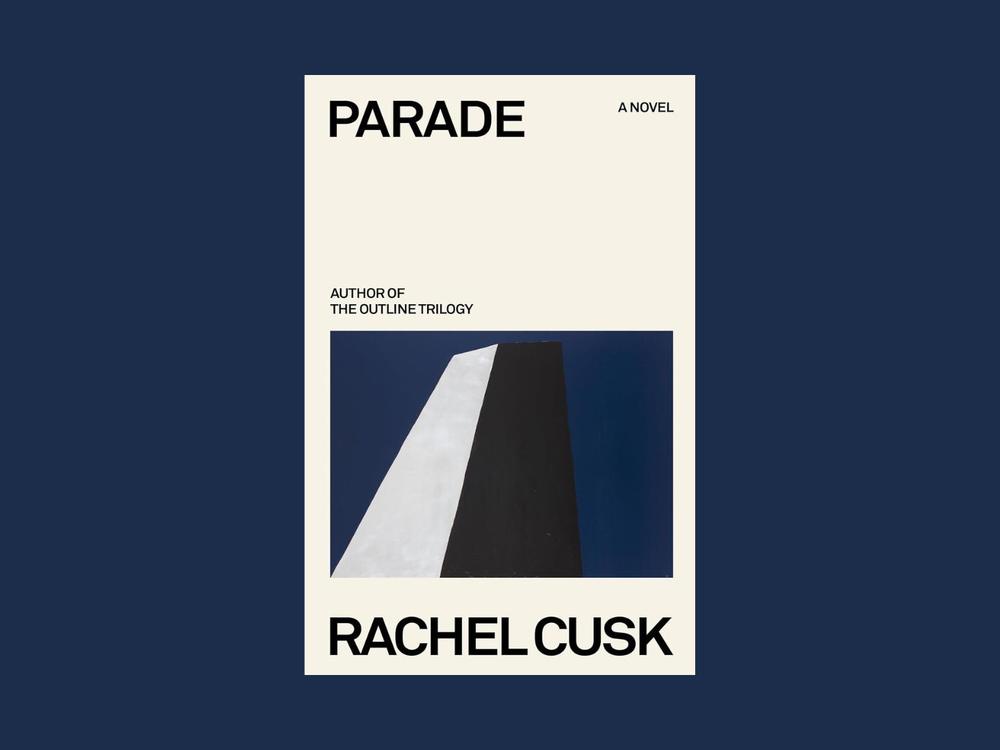Section Branding
Header Content
In 'Parade,' Rachel Cusk once again flouts traditional narrative
Primary Content
In her latest novel, Parade, Rachel Cusk once again flouts traditional narrative to probe questions about the connections between freedom, gender, domesticity, art, and suffering in a series of fractured, loosely connected, quasi-essayic fictional episodes.
But Parade is a more abstract and less inviting construct than Cusk's Outline trilogy and her 2021 novel Second Place. However unconventional, each of those books features a woman writer who provides a narrative through-line: Faye, in the celebrated trilogy, seeks to find her footing after a bitter divorce by eliciting others' revelatory confidences, while the writer dubbed "M" in Second Place recounts her obsession with a famous painter dubbed "L."
Cusk's 12th book of fiction offers no such centralized narrative maypole, repeatedly shifting direction and leaving readers in the lurch. Parade is divided into four sections, whose titles -- "The Stuntman," "The Midwife," "The Diver," and "The Spy" — could be read as thumbnail descriptors for how multiple artists, all called G, produce their art. The fact that Cusk's parade of deracinated seekers are all identified by the same initial is obviously meant to suggest a connection between them. But the deliberately obfuscating shared initial, combined with erratic jumps between first- and third-person narration, struck me as not just off-putting but pretentious. While Cusk's aim is apparently a sort of Cubist group portrait of her artists, she has taken her experimental abstraction too far this time.
"The Stuntman" begins boldly, with a line that made me think of another G man, the satirical Ukrainian Russian writer Nikolai Gogol. Cusk writes: "At a certain point in his career the artist G, perhaps because he could find no other way to make sense of his time and place in history, began to paint upside down." We're told that while no one knows whether G actually painted upside down or simply inverted his finished canvases, he was careful to establish the painting's preferred orientation with his signature.
In a remark that could apply to her own artistic trajectory, Cusk notes that after being "savagely criticised" for his early work, G's new approach garnered "a fresh round of awards and honours that people seemed disposed to offer him almost no matter what he did."
More parallels with Cusk's own creative arc emerge in her account of G's development. The painter, she writes, deeply affected by his poisonous early reception, "had found a way out of his artistic impasse, caught as he had felt himself to be between the anecdotal nature of representation and the disengagement of abstraction." Cusk, who was vilified for her harsh take on motherhood and domesticity in her early books, also shifted gears to emerge triumphant with her innovative Outline.
But not everyone approved of the "new reality" reflected in G's upended canvases. "His wife believed that with this development he had inadvertently expressed something disturbing about the female condition."
The stuntman of this tale is not just the artist G but also his wife, inverted in her husband's unflattering portraits. And it is also the woman — who may or many not be the artist's wife — who, disoriented after an unprovoked attack by a deranged woman while walking in an unnamed city, describes her sense of an alternate self in which she is "a kind of stuntman." In a way, all of Cusk's female characters -- artists, writers, wives, gallerists -- are stuntmen fighting what one of them calls the "quicksands of female irrelevance.”
"The Stuntman" ends with G and this woman traveling to another unnamed city to see a retrospective exhibition of works by a female sculptor, also called G. This exhibit, shut down on its opening day by a suicide at the museum, figures again in the novel's third section, "The Diver,” in which the museum's director and the artist's biographer gather with other art professionals to discuss the day's upsetting events over dinner, noting how the suicide mirrors the "power of disturbance" in the featured sculptor's work.
Their wide-ranging conversation evokes the sort of earnest intellectual exchanges that people have in French movies. It is classic Cusk, touching on questions about art's relationship to morality and the challenges of combining art with marriage and motherhood. These issues are also raised in the novel's dark, fairy-tale-like second section, "The Midwife," in which another female artist named G is trapped in a horrible marriage to a man who seizes control of their daughter and disapproves of his wife's work, though not the money it generates.
The last section of the novel, "The Spy," is a bit of an outlier, evoking the sad impossibility of resolution after the death of parents with whom one has had a contentious relationship (as Cusk did with hers). It is about a filmmaker -- called G, of course -- who broke away from his loveless childhood by adopting a pseudonym. This anonymity gave him freedom, but also led to a sense of detachment, with "no investment in the game of life. He is a spy; his ego is exiled, at bay."
In Parade, as in all her recent work, Cusk strives toward what she has lauded in Italian writer Natalia Ginzburg's writing: "a more truthful representation of reality" through "a careful use of distance that is never allowed to become detachment.” But this novel, intermittently intriguing but mostly alienating, asks too much of readers.

